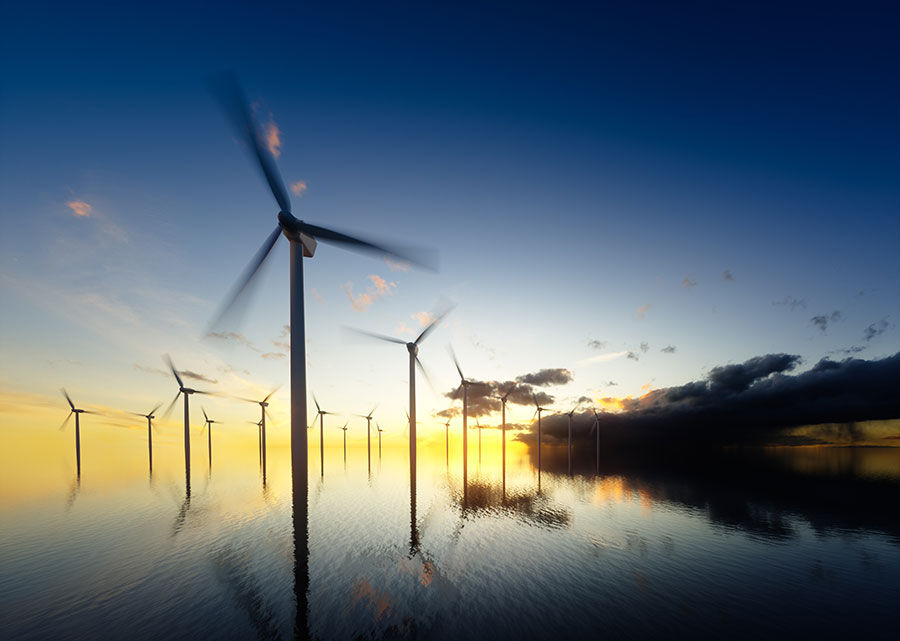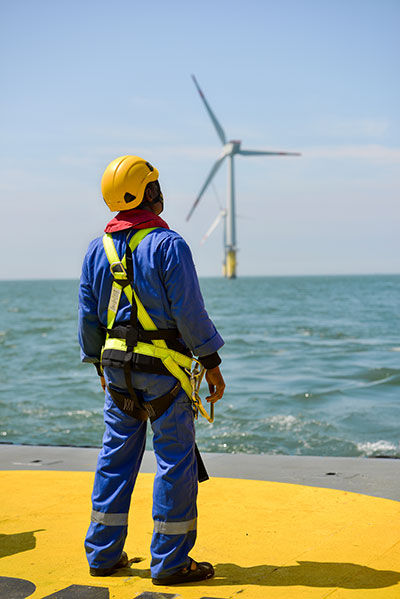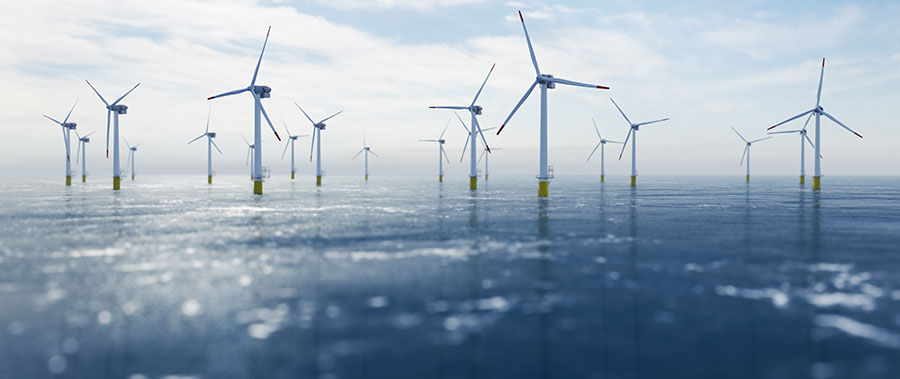Owners and operators can also make significant savings by refocusing on minor repairs. The most expensive tasks gearbox, main bearing and blade replacements are often front-of-mind. However, ONYX Insight estimates that work classed as minor correctives, such as pitch subsystem or yaw drives, accounts for approximately half of scheduled O&M.
Calendar-based instead of production-based scheduled maintenance causes inefficiency, incentivizing maintenance teams to perform the same work on all assets regardless of need. This issue has been compounded by a reliance on often outdated manuals which fail to reflect modern diagnostic advances. Merging and prioritizing this work by moving to condition-based maintenance can deliver significant savings and improve reliability of assets.
Intelligence on asset health is crucial to enable this. What components across a fleet need replacement? Which assets only require monitoring in the short term? To benefit, wind farm owners and operators will need support from a predictive maintenance partner that can answer these mission-critical questions.
The Next Technology Wave
The offshore wind sector is on the brink of a new technological revolution. A new data-focused era beckons, promising a future of intelligent, connected wind assets.
Advances will include instant insights at the touch of a button; remote inspection via drones; and autonomous robotic repairs. It sounds like science fiction, but the groundwork is being conducted today by forward-thinking owners and operators.
Life extension from day one
We must also remember that wind turbines being built today will be operational in 2050. Advanced predictive maintenance is already pushing the envelope on what is considered a useful turbine lifetime. By putting in place a data-driven life extension strategy as the turbine life cycle begins, not at the end of the warranty period, owners and operators stand to maximize the benefits.
Predictive maintenance for life extension can take many forms. Cross-channel data analysis combining insights from oil condition and vibration monitoring is already being rolled out. As more owners and operators become aware of the benefits of multi-channel data analytics, the potential to extend turbine lifetimes will increase accordingly.
Predictive maintenance also maximizes the impact of low cost, simple actions, such as performing grease flushing to protect the main bearing and identifying high risk components in advance to replace them at the optimal time. A grease flushing can add years to the lifetime of a component but is only 1% of the replacement cost crucial for managing annual budgets.
Maintaining assets in peak health for longer has wider benefits for the industry. It can increase the value of a wind farm by up to 12%, unlocking further investment. If the correct predictive maintenance and data management strategies are ingrained into the entire UK offshore and onshore wind market, for example, the savings could be £140 million over the next five years.
The sooner predictive maintenance is implemented, the longer the life of the asset, and the greater the returns. Every KWh of production after the asset cost is paid back is pure profit and the right predictive maintenance program can extend useful asset life by 25%.
Independent assessments of the true cost of components and maintenance work can provide much needed reassurance to owners and operators.
Embracing new technologies
A further revolution in offshore wind will be enabled by investment into automated and remote technologies such as drones, facilitating safe inspections at a lower cost. The most dangerous and costly tasks, such as blade inspections, will be done by automated robotic automotive platforms. This places technicians out of harm's way as well as reducing logistical costs.
This robotic future comes together with mobile technology. In today's connected world, inspection data need no longer be relegated to dusty storage cabinets. Visual inspections by technicians are a valuable source of information about asset health. The latest mobile applications such as fieldPRO digitize inspection data automatically and create clean data for analysis by expert engineers armed with machine learning algorithms.
Digital tools can also lessen the pressure of skills gaps, by standardizing best practice and supporting operational decision making. Additionally, streamlining data collection can empower experienced personnel to spend more time problem solving, and less time on administrative tasks.
Long term: Growing a healthy offshore wind sector
Promoting sustainable growth in the long-term comes from putting in place best practice now. Ultimately, the most impactful gains for offshore wind will come through large-scale collaboration through supply-chain wide data sharing and knowledge transfer.
Designing for use
Take the design of wind turbines, the lifeblood of industry growth. Currently, wind turbine designers are tasked with delivering a turbine that can be easily produced and withstand both the environmental challenges and production expectations of offshore operations. Maintenance or serviceability of the asset is often a secondary issue during design stage, which creates bottlenecks for O&M due to access issues for teams on the ground.
However, by focusing more on the operational requirements of wind turbines during the design process, the industry could see significant efficiency gains throughout the wider asset life cycle. Considering the placement and accessibility of fluid intakes, or the location of access hatches, for example, could streamline processes significantly throughout a maintenance job significantly reducing the cost of owning a wind turbine throughout its life.
Key to unlocking a holistic approach to turbine design is open communication throughout the supply chain. The reality of the turbine experienced by maintenance teams needs to be shared with design engineers, to ensure that from installation, to maintenance, to decommissioning, the asset has efficiency built in.
Europe continues to set a benchmark, led by the UK, which has committed to power every home through offshore wind by 2030.
Collaborative maintenance zones
A further step-change in offshore wind operations will be delivered through a cluster approach to O&M across large offshore sites.
Logistics is the defining challenge of offshore wind. Locational proximity is therefore a key opportunity for the sector. As projects are built further out to sea around the world, there is a huge chance for owners and operators to pool resources and drive unprecedented economies of scale.
This can already be seen in giant projects such as the 3.6GW Dogger Bank, owned by Equinor and SSE Renewables and, as tenders involving clusters of assets become more common, operational practices must keep pace. Data sharing and joint maintenance tenders will help to keep unnecessary trips out to wind farms to a minimum and advanced diagnostics to accurately estimate remaining useful life can support this.
If the correct predictive maintenance and data management strategies are ingrained into the entire UK offshore and onshore wind market - the savings could be £140 million over the next five years.
There's a final market dynamic which threatens the efficiency of offshore wind. Competition drives innovation and helps to deliver continued reduction in price. In the onshore industry, the cost of O&M service contracts has halved in the last three years due to multiple offers on the market from OEMs, ISPs and O&M teams looking to self-perform. However, in offshore wind, high barriers to entry favor the larger players, which could stifle the natural inventive spirit of the wind O&M sector.
Fixed costs such as jack-up rigs will limit the extent of downward pressure in practice, but artificially low pricing strategies adopted by some companies are driving margins down and could result in an entrenched oligopoly within the O&M space, limiting the options available to owners and operators for service contracts.
Independent assessments of the true cost of components and maintenance work can provide much needed reassurance to owners and operators. During vital periods such as during major component replacement work, this can be a significant boost.
When owners and operators have been properly informed on the risks of activities and the true condition of their assets, extra knowledge gives them the confidence to choose the right partner to help them save money in the long run.
 Dr. Evgenia Golysheva, head of engineering, has been working closely with a majority of UK offshore wind farms for many years providing owners (Centrica, SSE, RWE, SPR) with data enabled engineering projects focusing on increasingly efficiency of offshore wind farm operation, improving turbine reliability and de-risking major maintenance operations. She is leading the UK engineering team at ONYX focusing on developing data driven methodologies for predictive maintenance: life models for the wind turbine components, advanced diagnostics using various condition monitoring systems, and operations and maintenance cost optimization models.
Dr. Evgenia Golysheva, head of engineering, has been working closely with a majority of UK offshore wind farms for many years providing owners (Centrica, SSE, RWE, SPR) with data enabled engineering projects focusing on increasingly efficiency of offshore wind farm operation, improving turbine reliability and de-risking major maintenance operations. She is leading the UK engineering team at ONYX focusing on developing data driven methodologies for predictive maintenance: life models for the wind turbine components, advanced diagnostics using various condition monitoring systems, and operations and maintenance cost optimization models.
Technology & Sustainable Growth
As an industry, there's much that offshore wind can collectively be proud of.
The sector is set to spearhead the green recovery, especially in countries such as the UK where offshore wind represents the best way and example of how to scale renewables.
Investors are confident in offshore wind as an asset class, providing the resources for further innovation and growth. This comes in tandem with increasing interest from oil majors, who are slowly recognizing that the future of energy lies in the sky, not the ground.
With the right people, and the right tools, there is huge potential for the industry to provide affordable and clean energy in the run up to 2050 and beyond.
But to achieve this potential, owners and operators must future-proof operations by seizing on advances in digital tools that enable them to do more with less. Even now, turbine lifetimes of 40 years are within reach for assets installed in the next few years, with the right O&M strategies in place.
This is crucial as the industry tackles the exciting opportunity of floating wind, which will bring new logistical challenges that will lead to further evolution in O&M.
Ultimately, to ensure the continued success of the offshore wind sector, it is vital to optimize the production of current assets alongside building new infrastructure — and the best way to achieve this is through smart predictive maintenance strategies.
onyxinsight.com










